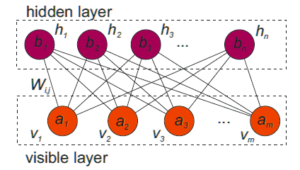


This modification can be discovered by the sender and the receiver of qubits. First of all, the rules of quantum mechanics ensure that measurement modifies the state of the transmitted qubit (quantum bit). Quantum cryptography ensures secure key distribution by means of the laws of quantum mechanics. 5, experimental results are discussed and compared with typical scenarios used in neural cryptography. The new solution based on machine learning in error correction process is presented in Sect. An introduction and presentation of the artificial neural networks used in neural cryptography follow in Sect. An introduction to quantum cryptography-especially a description of the key distillation process-is presented in Sect.

The rest of the article proceeds as follows. These features are inherent in the solution presented in this article-synchronization of the artificial neural network to correct errors occurring in quantum channel during quantum key distribution process. Therefore, it is desirable to use secure and efficient methods in practical implementations. This process directly influences the performance of key distribution and also the security and length of final cryptographic key. However, measurement modifies the state of the transmitted information and even passive eavesdropping can be discovered by Alice and Bob.Īfter quantum key distribution in the quantum channel, the users must perform a key distillation process (consisting of quantum bit error estimation, error correction and privacy amplification) in order to establish the secure final key. At the same time, an eavesdropper (called Eve) can attempt to gain information about the key. Thanks to principles of quantum mechanics, secret keys can be established between entities/users-usually called Alice and Bob. Quantum cryptography is a technique which can ensure a very high level of data security. Therefore, the key reconciliation based on the new idea can be a secure and efficient solution. This feature significantly increases the level of security because a potential eavesdropper cannot effectively synchronize their own artificial neural networks in order to obtain information about the key. It has been shown that the synchronization process in the new solution is much faster than in the analogous scenario used in neural cryptography. The typical value of the quantum bit error rate does not exceed a few percent therefore, the strings are similar and also users’ neural networks are very similar at the beginning of the learning process. Users can build neural networks based on their own string of bits. This proposal assumes the use of mutual synchronization of artificial neural networks to correct errors occurring during transmission in the quantum channel. This article presents a new idea for a key reconciliation method in quantum cryptography. One of the most important problems remains secure and effective mechanisms for the key distillation process. Although this technique is characterized by a very high level of security, there are still challenges that limit the widespread use of quantum key distribution. Intensive work on quantum computing has increased interest in quantum cryptography in recent years.


 0 kommentar(er)
0 kommentar(er)
